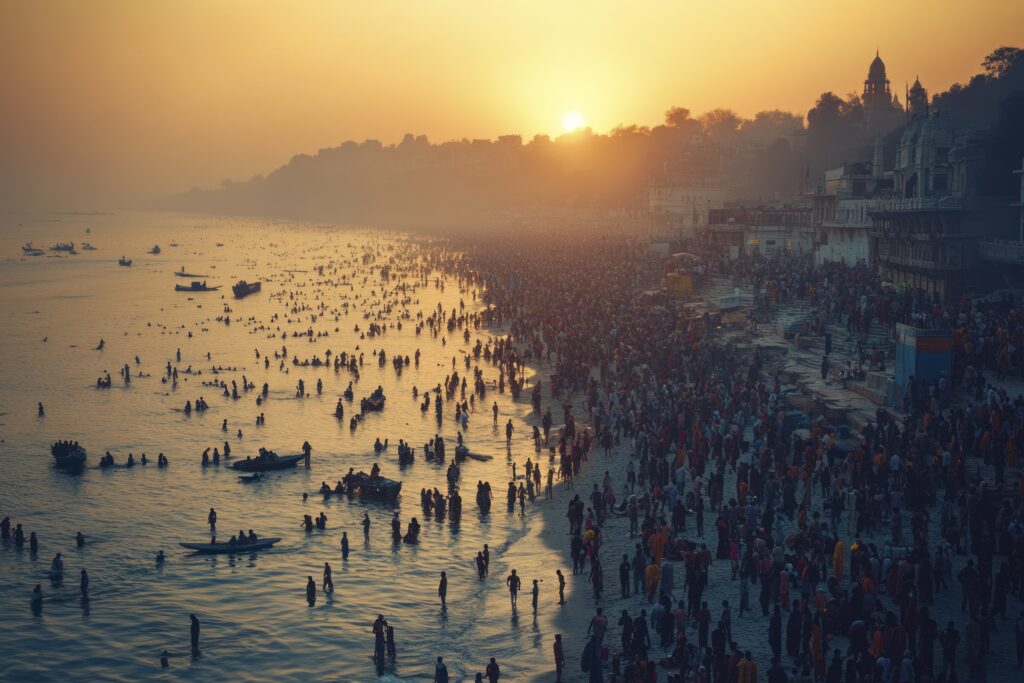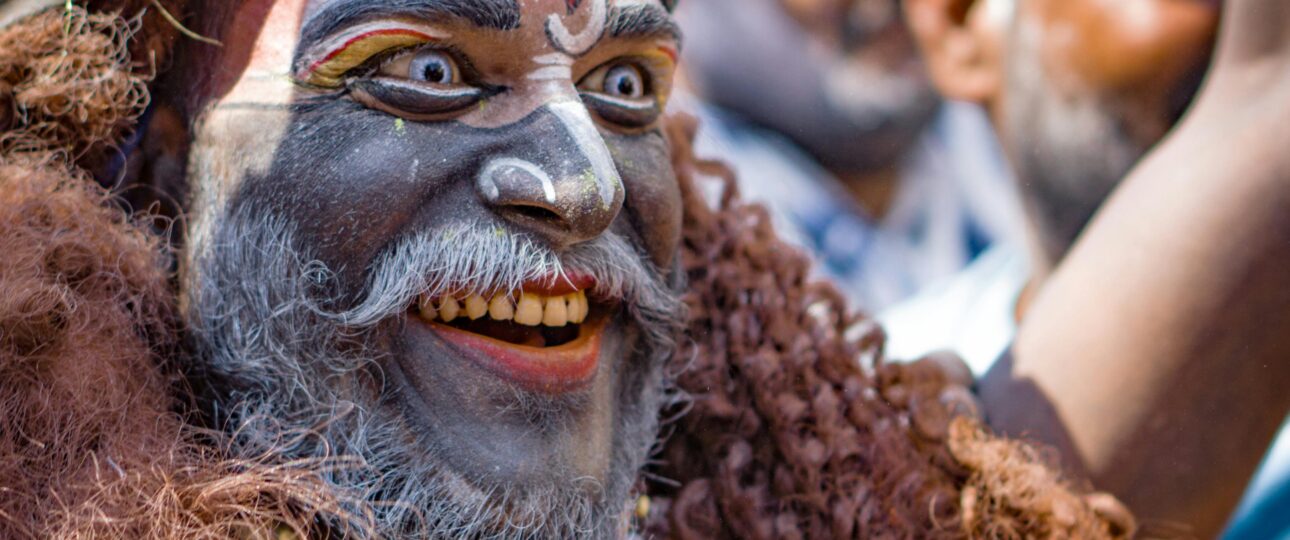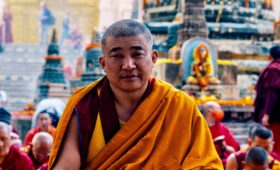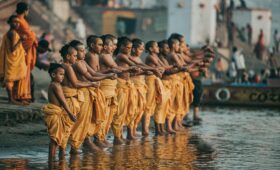Varanasi—also known as Kashi and Banaras—is not just a city; it is an eternal flame of spirituality, culture, and heritage that has burned continuously for thousands of years. Revered as the oldest living city in the world, Varanasi’s history stretches back to 5000 BC, making it even older than most ancient civilizations like Babylon, Athens, or Rome.
The sacred city is situated on the banks of the holy River Ganga, and for millennia, it has remained a magnet for seekers of knowledge, faith, and enlightenment. To Hindus, it is the abode of Lord Shiva. To Buddhists, it is the place where Gautama Buddha preached his first sermon at Sarnath. To Jains, it is where several Tirthankaras attained wisdom. And to travelers worldwide, it remains a living testimony to the timeless culture of India.
At Janxii Tours and Travels, we are proud to bring alive the stories of Kashi’s eternal history for travelers who wish to go beyond sightseeing and truly experience the soul of India.
In this blog, we’ll take you through the complete journey of Varanasi’s history—spanning mythology, archaeology, spirituality, invasions, revivals, colonial times, and the modern era—covering over 5000 years of continuity.

—
## 🌅 1. Mythological Origins of Varanasi (5000 BC and Before)
* Varanasi in Hindu mythology: The legends say that Lord Shiva himself founded the city after defeating the demon Tripurasura. Because of this divine association, Varanasi is often called “Shiv ki Nagari” (the city of Shiva).
* Name origins: The name “Varanasi” comes from the two rivers—Varuna (flowing in the north) and Assi (flowing in the south). The city lies between them.
* Kashi – the City of Light: In Sanskrit, *Kashi* means “the city of spiritual light.” It is mentioned in the Rigveda, one of the oldest scriptures, highlighting its antiquity.
* Skanda Purana’s references: The Purana describes Kashi as the holiest of all *tirthas* (pilgrimage sites), where salvation (*moksha*) is guaranteed.
For Hindus, dying in Kashi and being cremated at the Manikarnika Ghat is believed to free the soul from the cycle of rebirth. This belief has brought countless pilgrims for thousands of years.
—
## 🏺 2. Varanasi in Early Civilization (5000 BC – 1000 BC)
While mythology gives us a spiritual foundation, archaeology offers glimpses into real settlements.
* Excavations near Rajghat and Sarnath show that the area was inhabited as early as 3000–5000 BC.
* Pottery, terracotta figurines, and urban artifacts suggest Varanasi was part of the northern Black Polished Ware culture, making it one of the earliest continuously inhabited urban centers.
* Varanasi was a thriving trade hub due to its location along the Ganga, connecting eastern and western India. It traded in silk, ivory, muslin, and precious stones even in ancient times.
This era laid the foundations for Varanasi’s reputation as a city of learning and commerce.
—
## 📜 3. Varanasi in the Vedic & Epic Age (1000 BC – 500 AD)
* Center of Vedic learning: By the 1st millennium BC, Varanasi became a renowned seat of Sanskrit learning, philosophy, astronomy, and medicine.
* Ayurveda’s birthplace: The legendary physician Charaka and surgeon Sushruta, considered the father of surgery, taught and practiced in Varanasi. His text, the *Sushruta Samhita*, still influences medical traditions.
* Mentions in the Mahabharata and Ramayana: Both epics reference Kashi as a flourishing city. Kashi Naresh (King of Kashi) is a significant character in several stories.
* Rise of astrology and music: The city nurtured early schools of classical music, laying the foundation for the Banaras Gharana that emerged much later.
By the end of this era, Varanasi was firmly established as the spiritual and intellectual heart of India.
—
## 🕉️ 4. Influence of Jainism and Buddhism (500 BC – 500 AD)
### Jainism in Varanasi
* Lord Parshvanatha, the 23rd Tirthankara, was born in Varanasi in the 8th century BC.
* The city became a key pilgrimage center for Jains, with ancient temples that still stand today.
### Buddhism in Varanasi
* In 528 BC, Gautama Buddha delivered his first sermon at Sarnath after attaining enlightenment in Bodh Gaya.
* Known as the *Dharmachakra Pravartana Sutra*, this event marked the birth of Buddhism as a global religion.
* Sarnath soon grew into a major Buddhist learning and monastic center, visited by Chinese travelers like Fa-Hien and Hiuen Tsang.
This era made Varanasi the cradle of multiple religions, solidifying its global spiritual reputation.
—
## 🏛️ 5. Varanasi in the Gupta & Classical Age (500 – 1000 AD)
* During the Gupta Empire (4th–6th century AD), often called India’s Golden Age, Varanasi flourished.
* It became the center of Sanskrit literature, mathematics, astronomy, and philosophy.
* Poets and scholars like Kalidasa praised Kashi in their works.
* The city was also home to the development of classical dance and music traditions.
* Temples multiplied, making the skyline of Kashi a sea of rising spires.
By the 8th century, Adi Shankaracharya visited Kashi to revive Hindu philosophy, strengthening its spiritual identity.
—
## 🎶 6. Medieval Varanasi: Culture, Bhakti, and Sufism (1000 – 1500 AD)
This period saw both destruction and cultural flowering.
* Several Hindu temples were destroyed during invasions, but the resilience of the people kept traditions alive.
* The Bhakti Movement flourished here, with saints like:
* Kabir – the mystic poet, born in Varanasi, who preached unity beyond religion.
* Tulsidas – author of the *Ramcharitmanas*, one of the greatest epics in Hindi.
* Ravidas – the saint-poet who spread messages of equality.
* Varanasi became a meeting point of Hindu and Sufi traditions, producing a unique blend of devotional poetry and music.
This was an age when Kashi’s soul was tested but never defeated.
—
## 🕌 7. Varanasi Under the Mughals (1500 – 1800 AD)
* Under Akbar (1542–1605), Varanasi enjoyed patronage. Temples were rebuilt, and Hindu scholars thrived.
* Akbar’s courtiers, like Raja Man Singh and Raja Todar Mal, funded temple restorations.
* However, under Aurangzeb (1658–1707), several temples, including the original Kashi Vishwanath Temple, were destroyed and replaced with mosques.
* Despite this, the spirit of Kashi survived. Devotees continued worship secretly and rebuilt temples over time.
Varanasi remained a center of trade in silk, muslin, perfumes, and ivory, gaining global fame.
—
## 🇮🇳 8. Varanasi During Colonial India (1800 – 1947)
* The British admired Varanasi’s cultural richness but also saw it as politically volatile.
* The city became a center of Indian nationalism and independence movements.
* In 1916, Pandit Madan Mohan Malaviya founded Banaras Hindu University (BHU), which became a hub of modern education blended with traditional values.
* Freedom fighters like Annie Besant also worked in Varanasi, promoting education and political awareness.
By the time India gained independence in 1947, Varanasi had become a symbol of cultural pride and resistance.
—
## 🌍 9. Modern Varanasi (1947 – Present)
* After independence, Varanasi retained its status as a spiritual capital.
* Pilgrims continued flocking for Ganga Aarti at Dashashwamedh Ghat, cremations at Manikarnika, and darshan at Kashi Vishwanath Temple.
* The city also became famous worldwide for Banarasi silk sarees, classical music (with maestros like Ustad Bismillah Khan), and festivals.
* In recent years, the Kashi Vishwanath Corridor Project has transformed temple access, blending heritage with modern facilities.
* As the parliamentary constituency of Prime Minister Narendra Modi, Varanasi has received significant global attention and development.
Today, Varanasi is both ancient and modern, chaotic yet serene, spiritual yet lively.
—
## 🎭 10. Varanasi: The Cultural Heart of India
Varanasi is not only about temples and ghats—it is also the cradle of Indian art, music, and literature.
* Banaras Gharana: A unique style of Hindustani classical music and Kathak dance.
* Silk Weaving: Banarasi sarees, renowned worldwide for their elegance.
* Festivals: Dev Deepawali, Maha Shivratri, Holi, Diwali—each celebrated with unmatched grandeur.
* Cuisine: From Banarasi paan to kachori-sabzi, the city’s food reflects its vibrant soul.
For travelers, Varanasi is a living museum of Indian culture.
—
## ✨ 11. Why Visit Varanasi with Janxii Tours and Travels?
At Janxii Tours and Travels, we don’t just take you sightseeing—we help you live the history of Kashi.
Our packages include:
* Sunrise boat rides on the Ganga
* Guided tours of Kashi Vishwanath Temple
* Evening Ganga Aarti experience
* Visits to Sarnath and Jain temples
* Silk weaving workshops
* Walking tours of ancient lanes
📌 Contact Us Today:
📞 +91 6394631483
📧 [bookatjanxii@gmail.com](mailto:bookatjanxii@gmail.com)
—
## 🏁 Conclusion: The Timelessness of Kashi
From mythology to modern times, Varanasi has remained a living embodiment of India’s spiritual, cultural, and philosophical heritage. It has seen kingdoms rise and fall, empires invade and retreat, but its flame has never dimmed.
Varanasi is not just a city—it is a journey into eternity. Visiting it is not about tourism; it is about experiencing the essence of India’s soul.
If you’re ready to walk the ancient lanes, feel the divinity of the Ganga, and witness the eternal spirit of humanity, then Kashi awaits you.




